Review: The 2025 Mercedes-AMG G63 Offroad Pro Is the Ultimate G
Few proper off-roaders can match the Geländewagen’s range. Despite its ability to tackle rugged trails out of the box, thanks partly to its body-on-frame build, three locking differentials, and long-travel suspension, the G-Class can just as easily crawl the streets of Beverly Hills without looking out of place. It’s this versatility, its boxy looks, and its visibility as a status symbol that have granted this SUV its icon status.
Today, the Mercedes-AMG G63 remains the flagship G-Class. And because the G580 is powered by batteries and the G550 by an inline-six, it’s also the only version of this off-roader offered with eight cylinders under its hood. However, while most G63s ride on rubber band tires and large wheels, the one I’m in this week embraces a more rugged approach thanks to its optional $13,450 Offroad Package Pro upgrade.
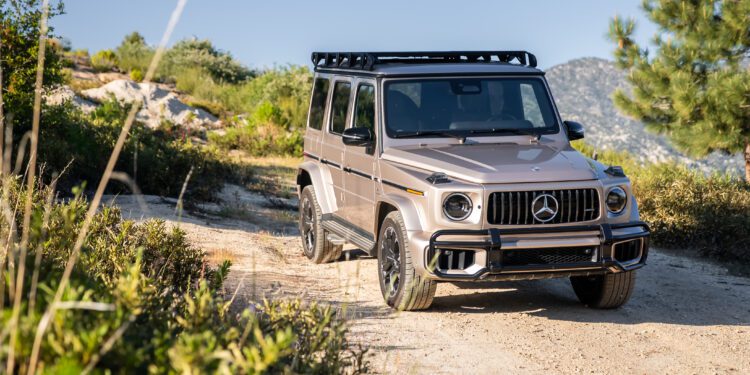
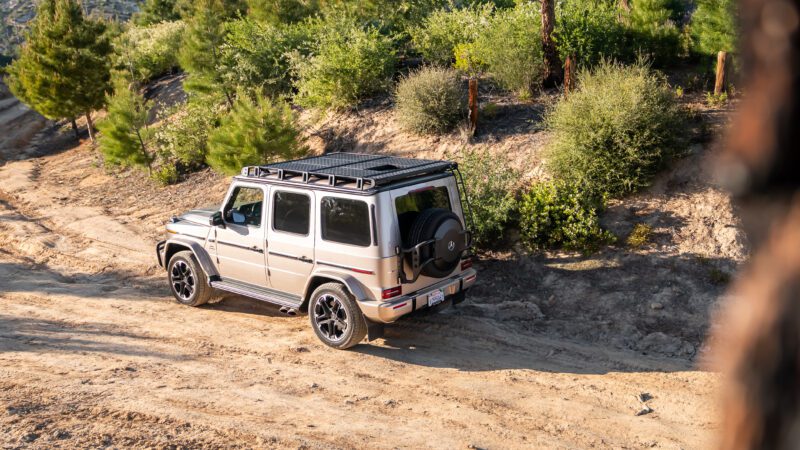
With a roof rack, mud flaps, and a smaller 20-inch wheelset wrapped in more off-road-focused tires, this G63 finallyadopts an aesthetic that matches its capabilities. And as you’ll soon learn, it doesn’t sacrifice its on-road performance to do it.
The G-Class is in a strange spot at the moment. The G550 I drove a few weeks ago left me missing its discontinued V8 more than loving the inline-six that replaced it. The G580 I tested before that proved to be a fantastic first crack at a battery-powered G. Yet despite its tremendous performance, clever off-road tech, and stellar ride quality, new reports suggest that it’s not flying off the shelves quite as Mercedes had hoped.
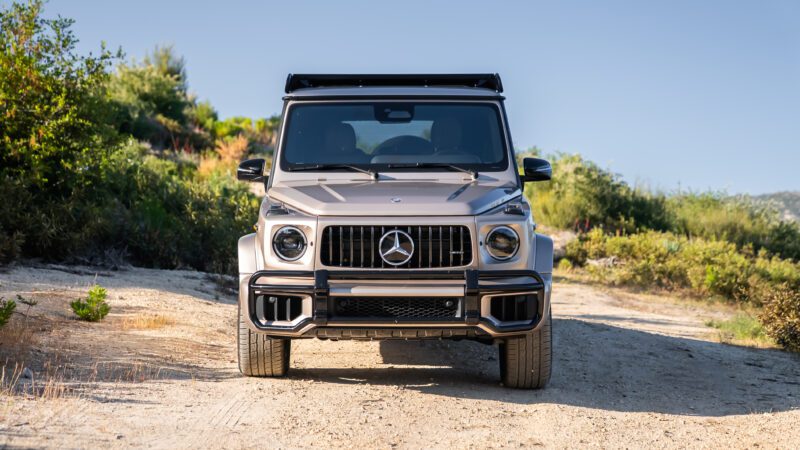
The fact that I had to wait a bit to get into the new Mercedes-AMG G63 ultimately turned out to be a blessing in disguise. From the moment you press its start button and hear its V8 rumble to when you hear the sound of its iconic door latch, the G63 feels like the most authentic G-Class on sale. Starting at $187,250, including a $1,150 destination fee, it’s also the most expensive, but more on that later.
The Geländewagen is defined by its ability to create a sense of occasion, and that’s precisely the area the $13,450 Offroad Pro package improves. Like the rest of the G-Class lineup, the G63 receives some subtle exterior updates for the 2025 model year, with most of the changes residing in its restyled front and rear bumpers. The eagle-eyed among you might also notice that its rear-view camera now sits above its license plate.
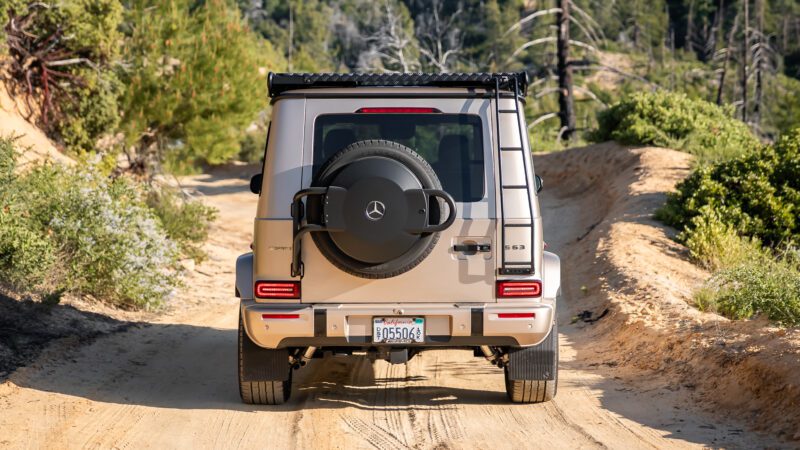
The Offroad Pro package forgoes any sense of subtlety. It starts with a metal roof rack complete with a small ladder bolted to this truck’s rear quarter panel. Its spare wheel holder also gets upgraded from plastic to metal, sporting the same textured black finish as the rest of the new gear. You’ll spot front and rear underguards adorning its bumpers and mud flaps positioned just behind its 20-inch wheels.
This look suits the Geländewagen’s spirit perfectly, and much like the rest of this SUV’s appeal, you don’t have to leave paved roads to appreciate it. Simply put, it looks stellar. Even if you never pitch a tent on the roof or see how far its General Grabber HTS rubber will take you, you can still enjoy how this optional package takes an SUV with a strong stylistic pull and strengthens its ability to draw you in.
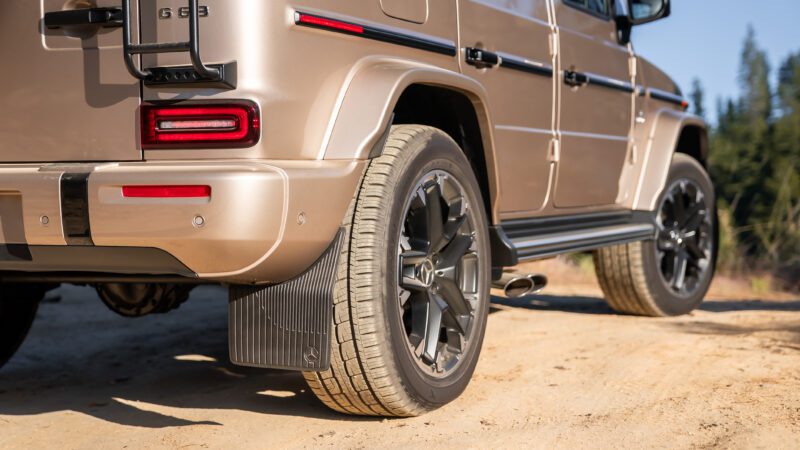
The final piece that makes up this optional package is perhaps the most important: its inclusion of AMG’s Active Ride Control suspension. Offered solely for the Mercedes-AMG G63, this is an active system that relies on hydraulics rather than anti-roll bars to eliminate excess lateral body movement. The suspension’s four dampers are hydraulically linked, with each damper featuring connections on both the damper and rebound sides.
As such, the system can respond instantly to bumps or road undulations by adjusting each corner of the suspension independently. The result is a tall SUV that weighs 5,842 pounds but still manages to tackle corners without giving you the impression that it’s ever ready to topple over. It’s a significant improvement in terms of stability over the outgoing Mercedes-AMG G63, making this newest model both more balanced and fun to drive.
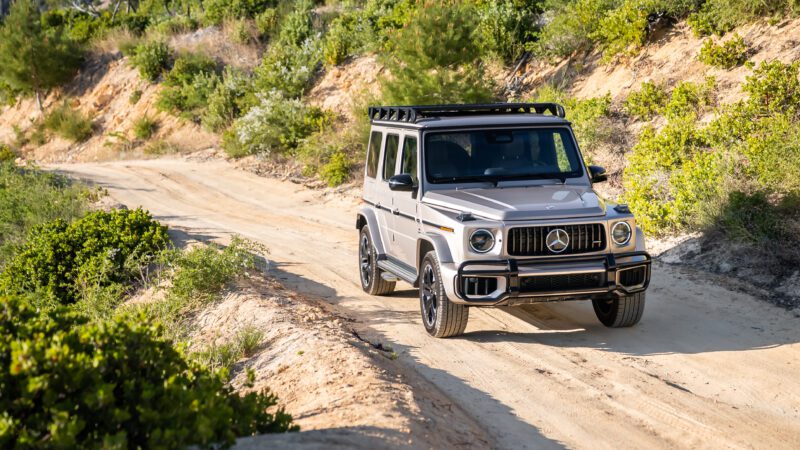
More importantly, the system gives its driver a higher sense of confidence when deploying this truck’s 577 horsepower and 627 pound-feet of torque output. It squats less under hard acceleration while also significantly reducing nose-dive under braking. AMG’s 4.0-liter twin-turbocharged V8 happily sings its burbly muscle car tune through its side-mounted exhaust tips while a quick-shifting nine-speed automatic transmission and a permanent all-wheel drive system make it feel every bit as potent as its stats suggest.
The G63 has never had a power problem, and with this latest model sprinting to 60 mph in 4.2 seconds, neither does this one. However, its optional active suspension allows you to explore far more of it than previous iterations. Yet even as you approach a bend, this truck’s upsized have no issue slowing it while its steering remains totally numb from a feedback perspective but picks up some newfound precision.
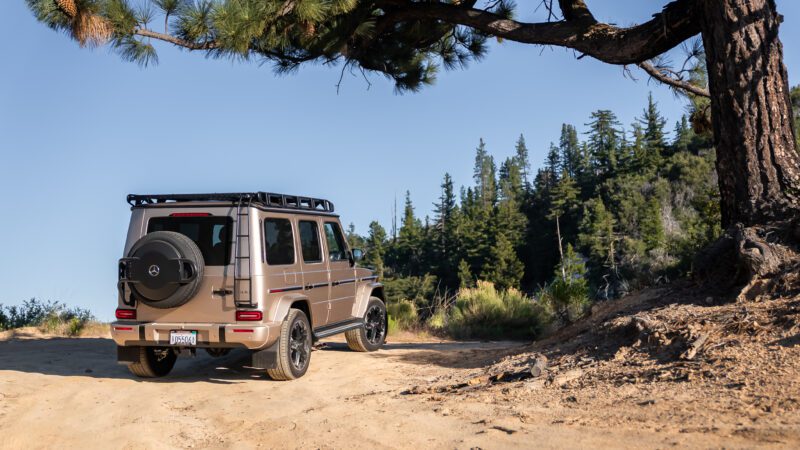
Crucially, the Mercedes-AMG G63 achieves this without diminishing its on-road comfort or daily usability. Instead, this active system and thicker tire sidewalls improve it. While its predecessor didn’t ride harshly, this latest model makes notable improvements, bringing the G’s ride quality closer to what you’d expect from a Range Rover. Of course, achieving this means giving up some of the old-school rugged and truck-like feel the G-Class is known for, but to all but the most hardcore fans, this will come across as a significant step forward.
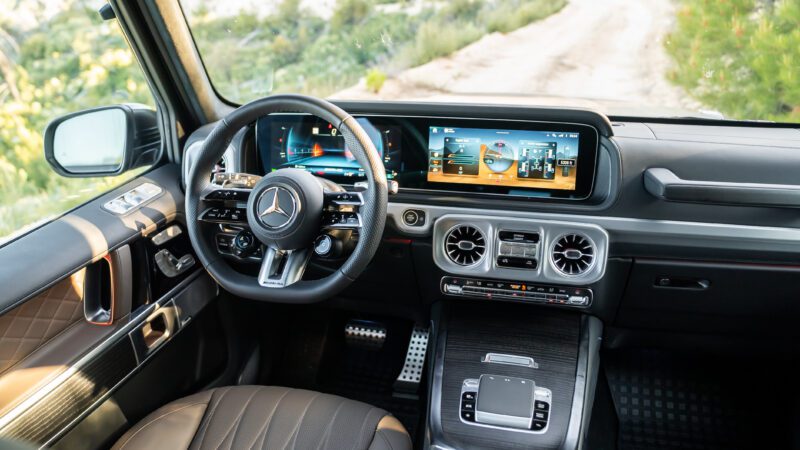
Inside, the Mercedes-AMG G63 continues the subtle upgrade trend. This tester features a classy Tartufo Brown finish on its seats, complementing the black leather used on its dashboard and steering wheel. A $1,300 ash wood trim option further elevates the cabin, which pairs well with this SUV’s $6,500 Desert Silver metallic exterior finish and its $2,350 AMG Night Package overall.
On the tech side, its twin 12.3-inch instrument cluster and infotainment displays might seem unchanged at first glance, but they house Mercedes’ new Offroad Cockpit. It’s a system designed for use primarily on trails, providing vital data at a glance, such as altitude, steering angle, and the vehicle’s position as the road grade changes. It’ll also allow you to use the G’s cameras to see a clear view of the road ahead and any upcoming rocks or debris.
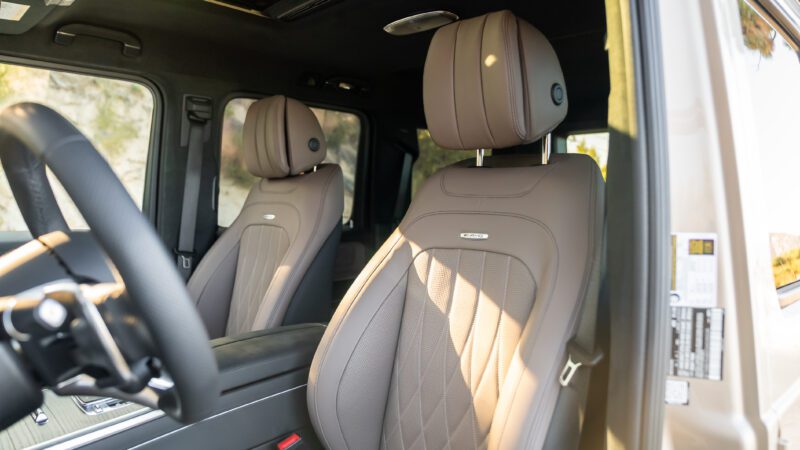
The Offroad Package’s biggest flaw becomes apparent once you’re behind the wheel, namely its increased wind noise at highway speeds. Although tire noise doesn’t increase significantly, the sound generated by this truck’s roof-mounted platform surely does. It’s enough to be distracting, requiring you to turn up your music a few clicks higher than you usually would. If a whisper-quiet cabin is what you’re after, this rugged G isn’t for you.
As I mentioned earlier, the Mercedes-AMG G63 remains the flagship model, starting at $187,250. For context, the G550 I reviewed earlier this year has a base price of $149,400, while the electrified G580 comes in at $162,650. Factor in optional extras like the $13,450 Offroad Package Pro, $7,400 Exclusive Interior Plus, and its $2,350 AMG Night Package, and this truck’s as-tested price balloons to $220,300.
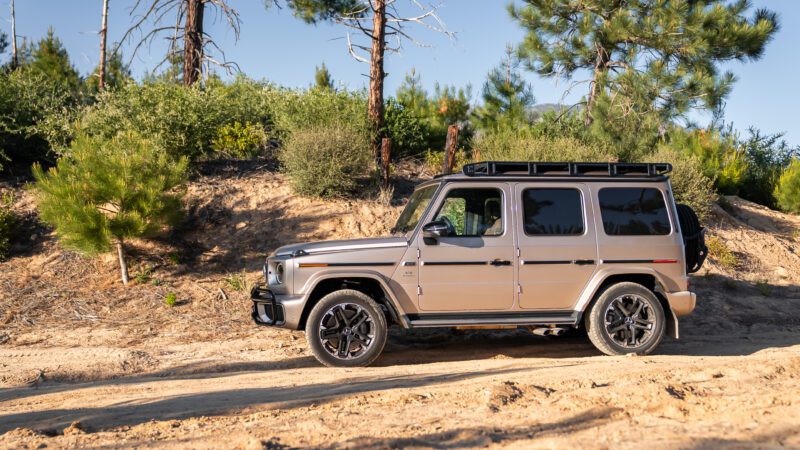
The G63 is an off-roader defined by its ability to create a sense of occasion, and the Offroad Package Pro only strengthens its ability to do so. Despite its added ruggedness, it allows this AMG to retain its ability to fit in anywhere. However, the upsides from an aesthetic perspective are significant. This SUV now has looks that match its off-road capability much better than in its more common form, featuring large wheels and tires with thick sidewalls.
However, what’s most impressive is just how well the G63’s active suspension improves both its high-speed stability and ride quality without significantly detracting from the G-Class experience. While the G550 takes a step back and the G580 struggles to catch on, the Mercedes-AMG G63 remains the ultimate G-Class.
Tags: Featured
Review: The 2025 GMC Yukon Denali Ultimate Is a Luxury SUV That Flies Under the Radar
by Gabriel Vega
in Reviews
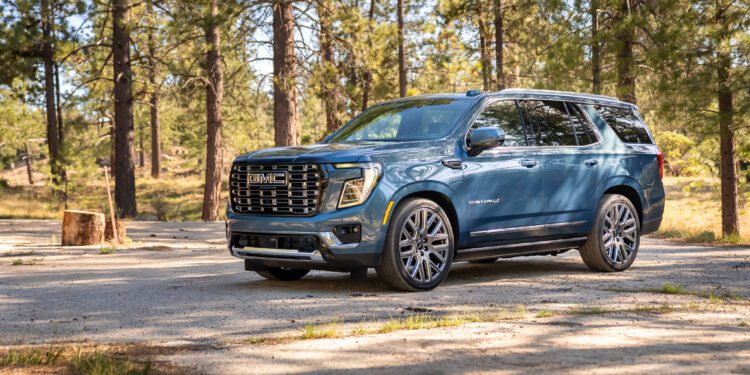
If you haven’t done so recently, take a second to look through the 2025 Cadillac Escalade’s configurator. The base model is the ironically-named “Luxury” trim, which starts at $92,290, including a $1,995 destination fee. At the top of the food chain, you’ll find the absolute maniac that is the V-Series, which asks for $166,690 without options, and its rowdy supercharged 6.2-liter V8.
With prices dipping into the six-figure range more often than not, Cadillac’s truck-based luxury SUV wants to go toe-to-toe with the Range Rovers of the world. However, as part of this transition, the Escalade has progressed from being an SUV a celebrity might step out of at an event to one they might actually drive. It’s more of a status symbol than ever and instantly recognizable as a luxury product. This creates a problem.
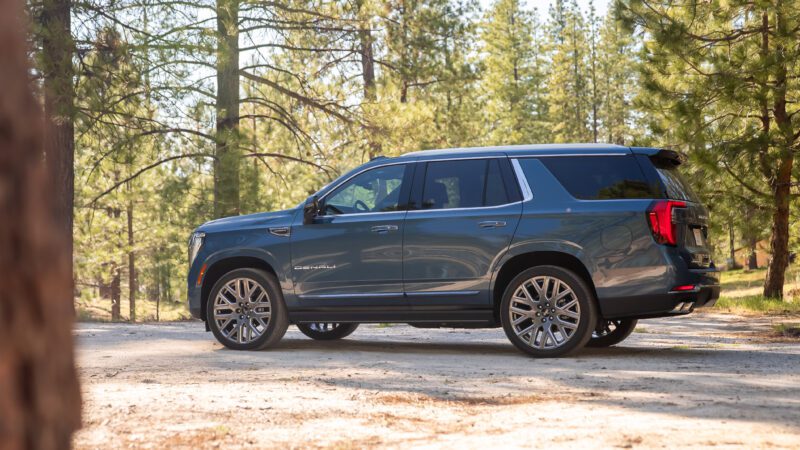
The problem exists for those who previously relied on the Escalade for low-key transportation. Driving a Rolls-Royce Cullinan guarantees you’ll be seen. But what if you don’t? That used to the Escalade’s turf alongside the BMW X7 and the Mercedes-Benz GLS; big three-row SUVs with ample space, all of the luxury fittings you’d want in a commuter, and guaranteed anonymity. With the Cadillac’s sights set firmly on an entirely different crowd, we can add the 2025 GMC Yukon Denali Ultimate to that list.
I’ll admit that before the opportunity to drive one appeared, the GMC Yukon Denali Ultimate wasn’t on my radar. Aside from a review of the off-road AT4 trim I did over four years ago, my only contact with the Yukon since has been from the back seat of an Uber Black.
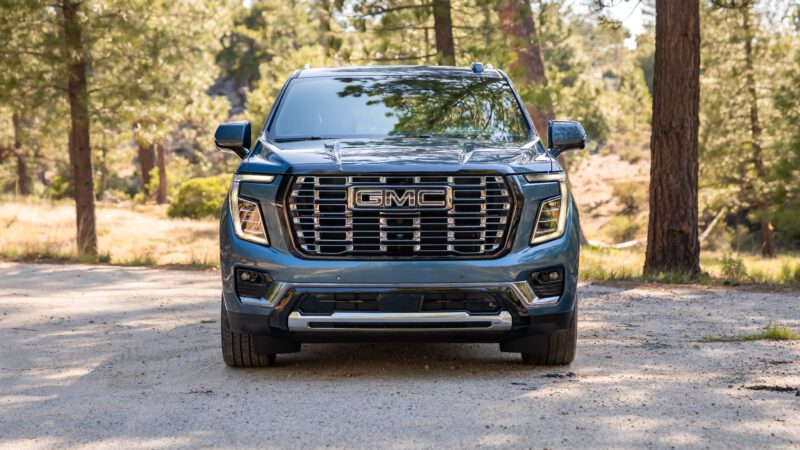
Today, the Yukon is GMC’s flagship internal-combustion SUV, and the Denali Ultimate is its range-topping variant. It starts at $103,295, including a $1,995 destination fee, and comes loaded with standard equipment, making this tester’s list of optional extras relatively short. It adds Night Vision for $2,000, the Illumination Package for $1,195, and a Floor Liner Package for $475. Even its Downpour Metallic exterior paint costs only $495, bringing its as-tested price to $107,460.
As such, there aren’t many decisions to make when configuring one. You can choose between seven different exterior colors, five wheel designs measuring 22 or 24 inches, and an interior package that upgrades the second-row seats. It replaces the almost cardboard flat captain’s chairs in my tester with a more premium, bolstered, and ventilated set in case you plan to be driven rather than driving yourself.
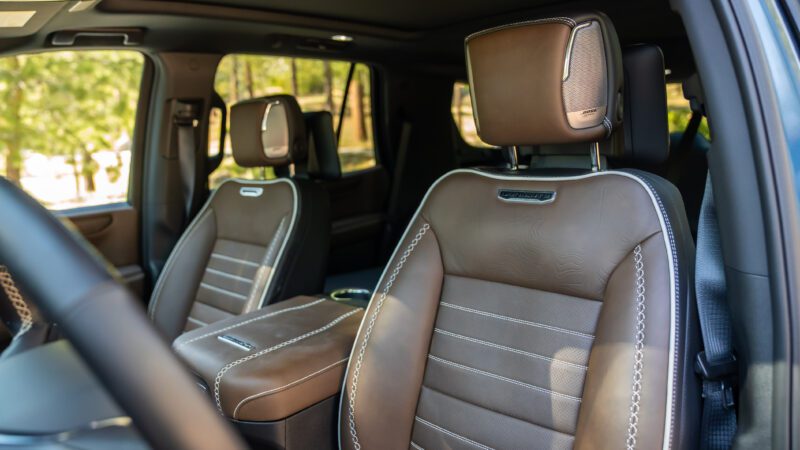
Crucially, there is just one interior color available, which is the Woodland Mahogany photographed above, accented with white stitching and laser-etched wood trim. If this LongHorn Steakhouse vibe isn’t quite your speed, you can step down from the Ultimate to the Denali and pick between off-white or black leather. However, you’ll miss out on the range-topper’s excellent 22-speaker Bose sound system.
As far as this interior’s livability goes. It’s a pleasant place to be. It remains relatively quiet on the highway. Its front seats are supportive but not firm, and this truck’s air suspension system has no trouble soaking up larger bumps at speed. As is common, the GMC Yukon Denali Ultimate features a digital instrument cluster and a central touchscreen for its infotainment. The latter is a gigantic 16.8-inch display that makes reading maps at a glance effortless while offering enough real estate to have multiple apps open simultaneously.
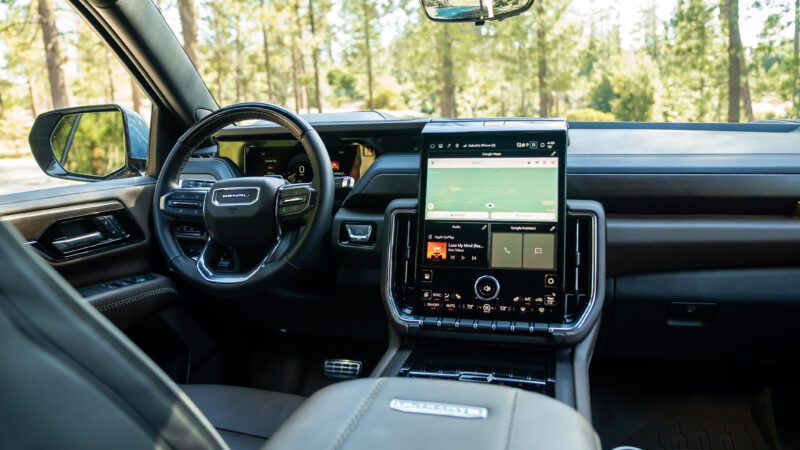
While you can adjust vital cabin settings through the touchscreen, GMC made the excellent decision to retain physical controls via a row of switches that are almost hidden in plain sight. The result is an interior that feels high-tech without losing its tactility. While some of this SUV’s plastic buttons feel somewhat out of place in a vehicle costing six figures, the Denali Ultimate makes up for it by being easy to use and including GM’s fantastic Super Cruise driver-assist system. Not only does it allow for hands-free driving, but it also does a good job of keeping this family hauler centered in the lane, even if Los Angeles’ road markings aren’t always the most clearly defined.
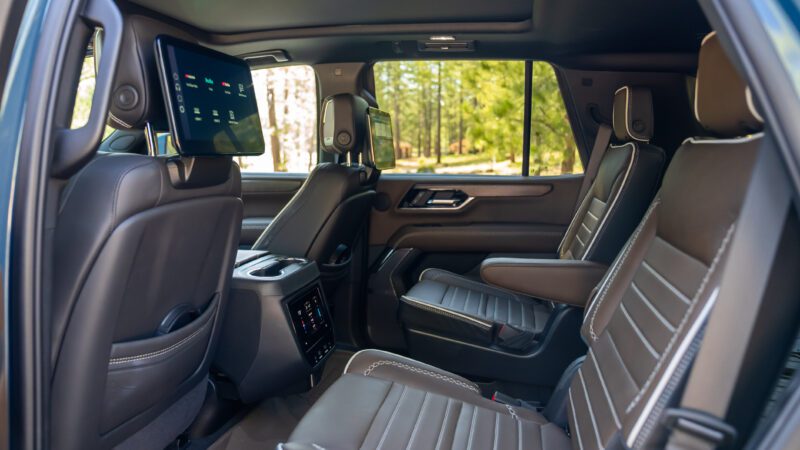
This brings me to the main reason why you’d buy a GMC Yukon Denali Ultimate, and that is its size. Its second and third rows fold flat, leaving you with a cavernous trunk with 122.9 cubic feet of space. What’s on offer here is versatility, and should you need more of it, the stretched XL variant exists.
From a driving perspective, you’ve got another choice to make. GMC offers the Denali Ultimate in two configurations: either with a turbocharged 3.0-liter Duramax inline-six diesel engine or a naturally aspirated 6.2-liter V8. The former develops 305 horsepower and 495 pound-feet of torque, while the latter produces 420 hp and 460 lb-ft. Regardless of which you go for, however, you’ll get a 10-speed automatic transmission, all-wheel drive, and an air suspension setup.
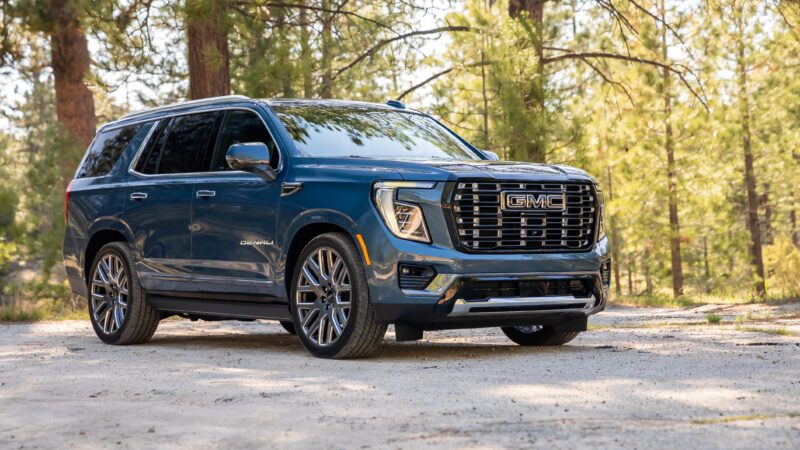
My tester sports the V8, and its chrome quad exhaust tips promise a burbly engine note that only partially materializes. Whether you’re standing by it or sitting inside, the GMC Yukon Denali Ultimate is remarkably quiet, underscored by a low, burbling hum. Even as you press the accelerator, you don’t get much of an engine note in the cabin, a plus given this SUV’s luxurious aspirations but a minus if you opted for the eight-cylinder route to hear them sing.
It’s a similar story once you hit the road. While GM’s 10-speed automatic transmission can be somewhat slow and clunky in other products, that isn’t the case here. It shifts both smoothly and quickly, attempting to maximize the available power. However, even with 460 lb-ft of torque, the Yukon feels sluggish, especially at highway speeds. Overtaking requires a boot-full of throttle, which is less surprising once you consider the Ultimate’s over 5,800-lb curb weight. If it manages to be just as quiet in most applications, the 3.0-liter diesel and its extra torque is the one to have.
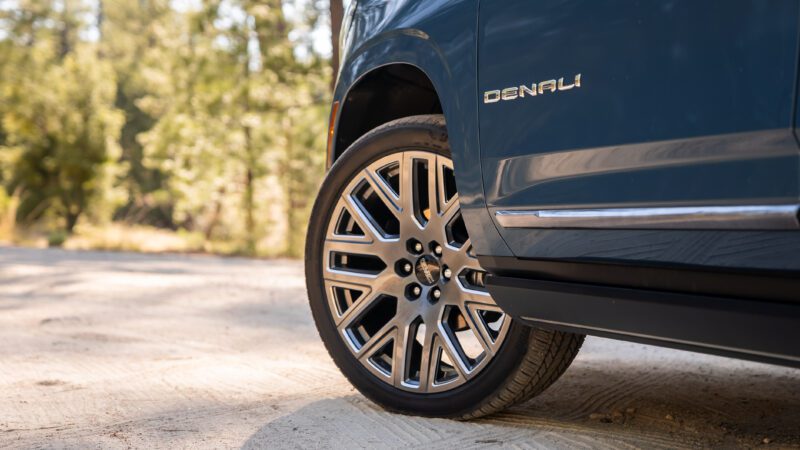
As I’ve alluded to, the GMC Yukon Denali Ultimate is based on the same platform as the Sierra pickup, and this body-on-frame SUV only partially conceals its truck roots. Its steering is heavy and pairs with a slow ratio. Unlike rivals like the BMW X7, the Ultimate lacks rear-axle steering, making it more challenging to maneuver through tight spaces. Simultaneously, its tall and flat hood limits forward visibility, although an onboard camera suite helps out considerably.
The GMC’s air suspension does the most heavy lifting. While Yukons that lack it often deliver a bouncy ride, that isn’t the case in the Denali Ultimate. It does a great job of handling undulations and road imperfections at highway speeds. However, it does have a tendency to struggle at slower speeds, picking up plenty of vibrations over rougher surfaces, a con of its massive 24-inch wheels.
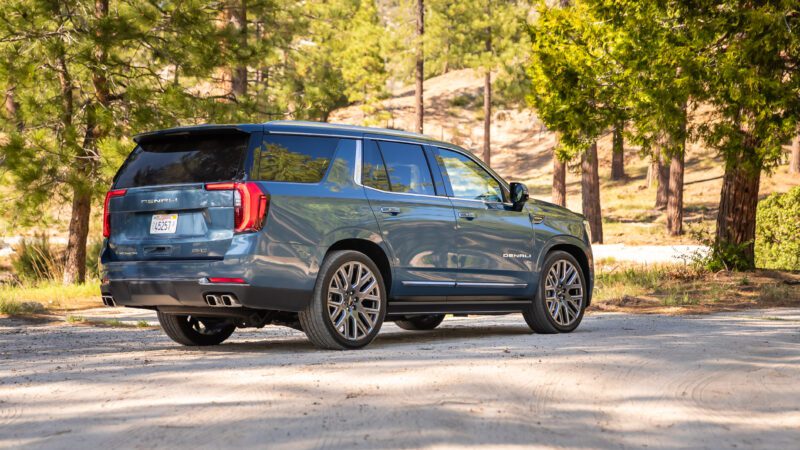
From a visual standpoint, it’s challenging to make what is essentially a giant box, designed to carry as much stuff and people as possible, look great. Still, the Denali Ultimate makes a valiant effort. Its Downpour Metallic exterior finish introduces some vibrancy while retaining a classy look. While this SUV features chrome trim, it is applied tastefully throughout. And while this GMC’s front grille is somewhat overbearing, its LED running lights are tastefully restrained.
The biggest aesthetic challenge it faces has less to do with its appearance and more to do with who buys it. As I mentioned earlier, a GMC Yukon has pulled up to my house when I’m on the way to the airport more times than I can count. You’ll often spot them in major cities across the US, as part of a car service fleet or driven by those looking to make top dollar on rideshare apps like Uber or Lyft. It’s a fact I kept getting reminded of every time I walked up to the Denali or saw another in chauffeur-spec at a stoplight. While it’s something you can ignore if you’re looking at one of the Yukon’s less expensive trim levels, it’s much harder to do so when you’re shelling out six figures for one.
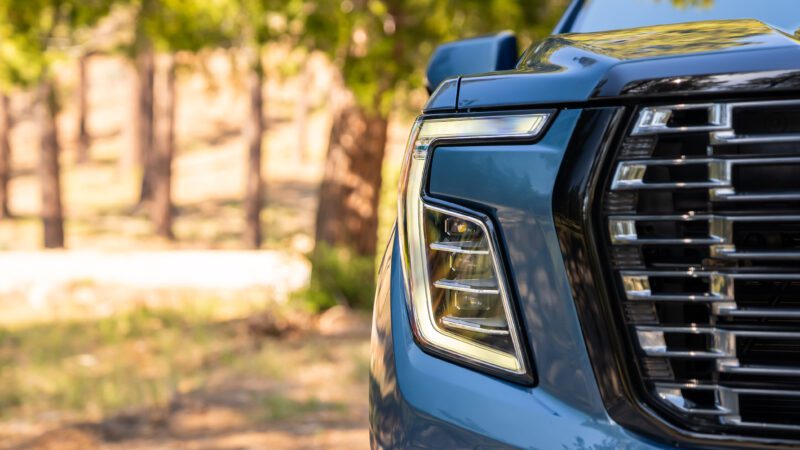
After a week behind the wheel, it’s clear that the GMC Yukon Denali Ultimate has many strengths. It’s tremendously spacious and offers an excellent in-cabin experience, both in terms of tech and comfort. Considering that it tops out in the low six-figure range, it’ll cost you less than an equivalent Range Rover, BMW X7, or Mercedes-Benz GLS.
However, as luxurious as the Denali Ultimate strives to be, it’s hampered by a driving experience that can’t shake its truck roots, an underwhelming engine, and an aesthetic that’s become ubiquitous for all the wrong reasons. Still, the Yukon manages to offer a luxury SUV experience in a package that allows you to fly under the radar. Despite some shortcomings, it’s ready to take up the mantle as the Escalade moves on.
Tags: Featured



